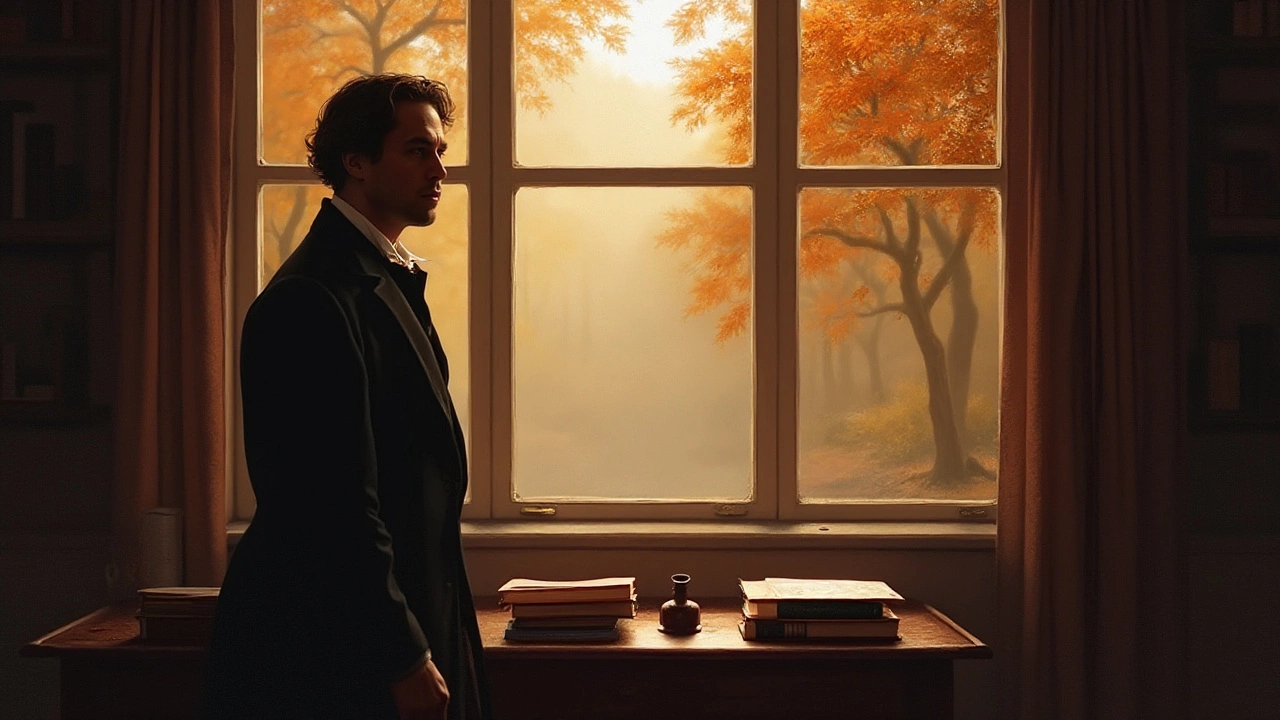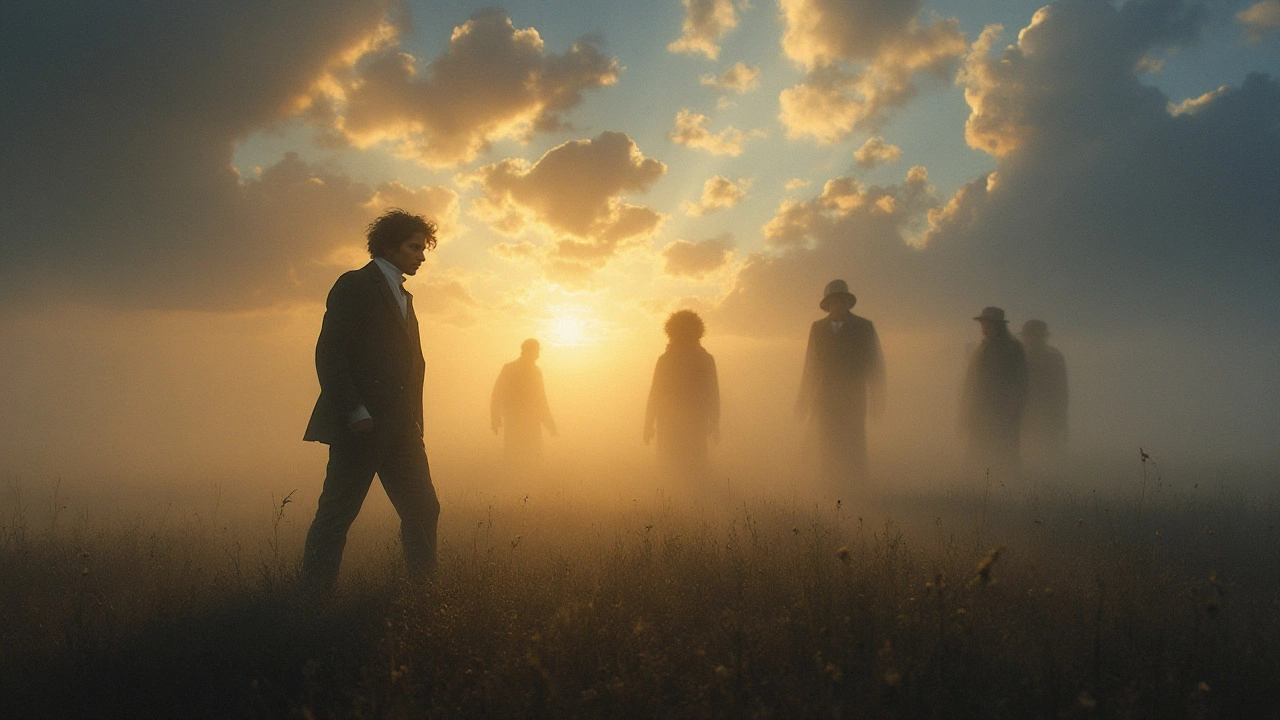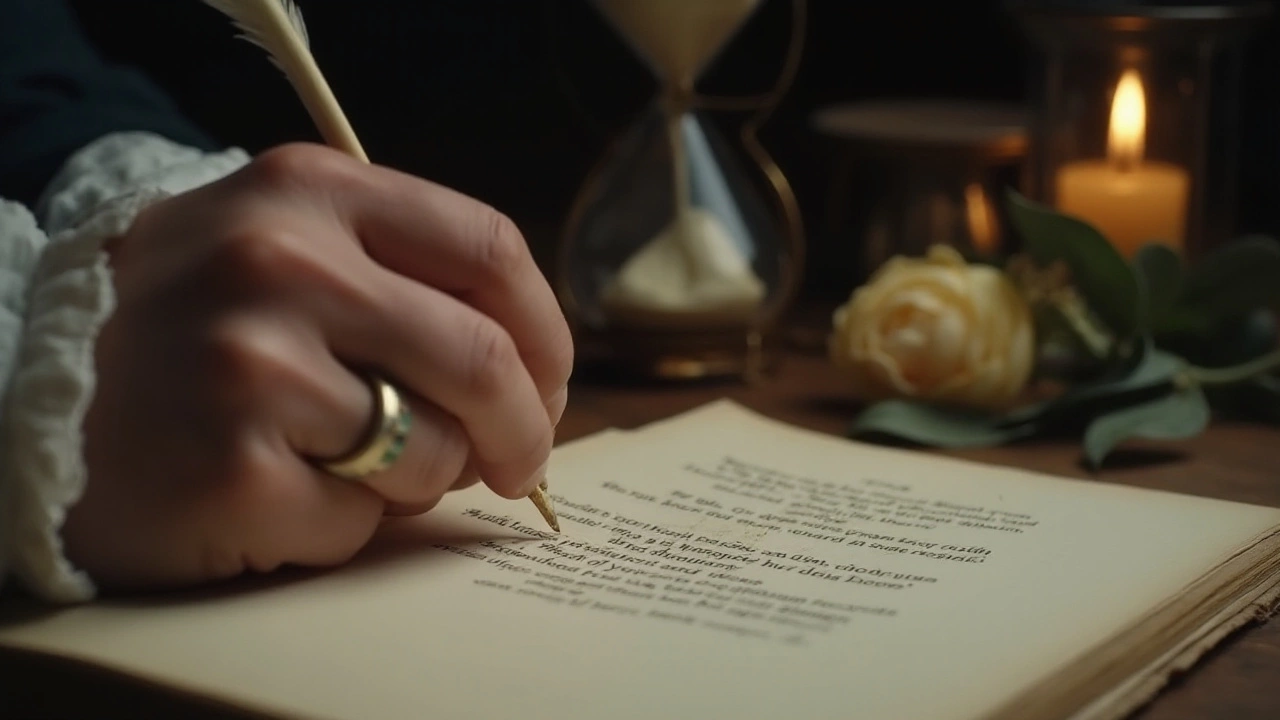Discovering John Keats' Most Heartbreaking Poem
 Jan, 24 2025
Jan, 24 2025
John Keats, a towering figure in English Romantic poetry, penned verses that resonate with profound emotion and brilliance. Amidst his illustrious body of work lies a poem so sorrowful that it eclipses others with its depth and poignancy. Crafting lines that echo the inescapable shadows of despair, Keats unravels human experiences through motifs of loss, love, and fleeting existence.
In this exploration, we venture into the melancholic heart of Keats' oeuvre to uncover his most sorrowful composition. It's more than a historical inquiry; it's a journey into the thematic elements that shaped Keats’ perspective on life, rendering a bond with anyone who has encountered sadness or yearned in quiet solitude.
As we delve deeper, this article uncovers the layers of meaning hidden beneath Keats' tender expressions. It further examines how this elegiac work encapsulates the poet’s own struggles and continues to resonate with audiences today. Within his words lies a narrative that links past with present, offering solace and insight through its exquisite melancholy.
- Introduction to John Keats' Poetry
- Exploring the Saddest Poem by Keats
- Themes of Loss and Melancholy
- Impact and Legacy of the Poem
Introduction to John Keats' Poetry
John Keats, born on October 31, 1795, in London, is celebrated as one of the most significant figures in English Romantic poetry. Despite his short life, Keats managed to produce a remarkably rich collection of poetry that continues to captivate readers with its emotional intensity and lyrical beauty. His works are characterized by their sensuous imagery, rich language, and a deep exploration of beauty and mortality. Keats harbored a profound connection to the world of nature, which reflected in his poems, marrying the ephemeral beauty of the natural world with the timeless human emotions he wished to immortalize through verse.
Keats' journey into the world of poetry was not without challenges. Emerging from a financially unstable background, he faced the barrier of societal class distinctions that often sidelined his literary ambitions. Despite such hurdles, Keats found solace and purpose in poetry, creating masterpieces that vividly depicted the beauty and transient nature of life. His friendship with fellow poets like Percy Bysshe Shelley and Leigh Hunt provided him not only with support but also inspiration. Guided by these influences, Keats developed his unique voice that seamlessly blended classical influences with radical personal insights.
Amongst his most recognizable works are the odes, particularly ‘Ode to a Nightingale’ and ‘Ode on a Grecian Urn’. These poems offer a window into his contemplations about the permanence of art versus the fleeting nature of human experience. One poignant reflection by Keats reminds us of the depth of his soul, 'Beauty is truth, truth beauty,—that is all ye know on earth, and all ye need to know.'
Biographer Walter Jackson Bates once remarked, 'Keats’s ambivalence is less a tension between contradictory emotions than like tramline depictions on separate but related tracks of a single activity powered by similar muscular forces.' His poetry encapsulates such duality, presenting a world that is simultaneously real and idealized, temporal and eternal.
Keats’ exploration of life and death through his poetry did not arise from theoretical musings alone; it was deeply personal. Suffering from chronic illness and facing the death of many family members, these themes represented not only intellectual curiosities but direct experiences. This gave his poetry an authenticity that rung true to readers across generations. His tragic demise at the young age of 25, from tuberculosis in 1821, rendered his life brief but impactful, leaving behind a legacy that urged his readers to keenly observe the beauty in the mundane and nurture the capacity for empathy and understanding.
John Keats’ poems are marked by their vivid imagination and rich expression. The renowned use of sensual imagery and synaesthetic descriptions invites readers to experience the text in a multi-dimensional way. Whether describing the allure of autumn, the melancholy nightingale's song, or the silent allure of a painted urn, Keats employed symbolism that transcended the immediate to reach universal meaning. His success in achieving this complexity is arguably due to his dedication towards 'Negative Capability', a concept that emphasizes the power of staying in doubt and uncertainty without an irritable reaching after fact and reason. It is this ability to thrive amidst uncertainty that makes Keats' poetry enduring.

Exploring the Saddest Poem by Keats
When discussing the emotional spectrum of John Keats' work, one cannot overlook the profound sadness embedded within certain pieces. Among such masterpieces, "Ode to a Nightingale" often emerges as a quintessential representation of Keats’ ability to weave sorrow and beauty into every line. Written in 1819, during one of the most productive periods of his career, this poem encapsulates his deep melancholy and existential contemplation. The thematic core revolves around the allure of the nightingale's song, which serves as an emblem of eternal beauty and an escape from human suffering. Written at a time when Keats was grappling with personal losses and the looming specter of his own mortality, the poem reflects his innermost fears and longings.
The poem begins with Keats immersed in a trance-like state induced by the nightingale's song. Keats, transported by the bird's melody, yearns to transcend the physical world overwhelmed by its relentless pain and impermanence. This desire is intricately linked to his broader existential musings, where he examines the ephemeral nature of human life compared to the seemingly immortal beauty of the bird's song. His exploration of these themes invites readers to consider the tension between the desire for a painless existence and the unavoidable reality of life's suffering. Keats' juxtaposition of dream versus reality further underscores the inevitable sorrow that accompanies the awareness of mortality.
Keats crafts this reflective journey with rich imagery and language that evoke the reader’s empathy and introspection. The poet's deft use of contrasts, such as the bird's eternal voice against human transience, intensifies the poem's melancholic tone. The nightingale, untroubled by worldly woes, becomes a symbol of the eternal, contrasting sharply with the poet's awareness of life's fleeting nature. Keats' own words echo within each stanza, his longing for the peace the nightingale embodies is palpable. This poignant desire to escape into the eternal beauty of the bird’s world highlights the universal struggle with the brevity and sadness of human existence.
"Heard melodies are sweet, but those unheard are sweeter; therefore, ye soft pipes, play on...."
Embedded within the poem's structure is a series of poignant reflections on the dichotomy of the lived experience versus the ideal world of art and imagination. Keats uses the nightingale as a metaphorical escape, where music becomes a conduit for transcending the trials of the earthly realm. This fusion of reality and imagination forms the poem’s backbone, a testament to Keats' masterful exploration of sorrow and longing. The dreamlike progression of the poem allows readers to navigate between these contrasting realms, offering a temporary respite from the burdens of reality. Such introspection and vivid articulation of inner torment cement "Ode to a Nightingale" as a literary achievement that resonates across generations. For readers, Keats’ interplay between beauty and sorrow remains a profound reflection of their struggles, inviting an emotional connection with his timeless lament.

Themes of Loss and Melancholy
John Keats is often celebrated for his ability to beautifully intertwine themes of loss and melancholy amidst the lush tapestries of his poetry. His work is suffused with a keen awareness of mortality, a haunting acknowledgment of the fleeting nature of joy and beauty, and an epic narrative of life's inevitable decay. This acute sensitivity towards loss stems not only from universal human experiences but also from his own life, where he faced the early deaths of his family members and his own struggle with illness. In his poetry, sorrow is explored not as a singular moment in time but as a pervasive journey that envelops every aspect of existence, drawing the reader into a profound introspection.
Keats often personifies melancholy as an inseparable companion to joy, reflecting on how life's ecstatic moments are invariably shadowed by the specter of their end. This duality is a centerpiece in many of his works. The poem often cited as his saddest probes this very essence of bitter-sweet nuance. He revels in the transient beauty of life, often reminding readers, in graceful and vivid images, that the sweetest music is shrillest to hear because it must inevitably fall silent. As he writes, "No, no, go not to Lethe, neither twist Wolf's-bane, tight-rooted, for its poisonous wine" – a reflection on resisting the urge to escape sorrow outright, suggesting instead an acceptance of melancholy's intimate presence in the quest for meaning.
From dying autumn leaves to the nightingale's song—again and again, Keats employs poignant symbols to convey loss. These images do not merely glorify the ephemeral but challenge us to find aesthetic richness in such melancholia. His vivid metaphors are infused with sensory experiences that evoke a profound yearning. This nostalgic longing becomes a route to understanding for those who face their personal tragedies. By reading and embracing the beautiful, though sorrowful, whispers through his verses, audiences can both appreciate and find solace in the intrinsic link between beauty and despair. "Poetry should... strike the Reader as a wording of his own highest thoughts, and appear almost a Remembrance," Keats once said, capturing his mission to echo unspoken emotions.

Impact and Legacy of the Poem
The emotional depth of John Keats’ poetry, particularly his saddest work, casts a lasting shadow over classical literature, defining him as a master of weaving human vulnerability into verse. This poem stands as a testament to Keats’ ability to articulate the profound sorrow and intricate nuances of human experience. With each stanza, he dismantles the facade of stoicism often preferred in public life, plunging into the raw authenticity of our shared existential plight. The poem's legacy lingers on through its fearless truthfulness and stark beauty. His exploration of life's impermanence and unattainable desires continues to echo through time, touching readers who grapple with their transience and unrealized dreams.
The universality of Keats' themes—love lost, the passage of time, and inevitable mortality—resonates across cultures, transcending his own life cut short by illness. His untimely death at twenty-five infuses his poems with an urgency and poignancy that amplifies their impact. Scholars consistently analyze how his personal suffering enriched his artistic vision, offering an intimate glimpse into his internal universe. An insightful reflection from 20th-century critic Helen Vendler highlights this:
"Keats' verse carries an ineffable poignancy, for in it lies the gravitas of youth parted prematurely from its joys and aspirations.”
The poem’s legacy also extends to its influence on subsequent generations of poets and writers. It inspired them to mine their depths for creativity, to embrace emotional honesty, and to not shy away from the darker shadows of the human psyche. His masterful command of language, particularly through the use of lyrical imagery and lush, sensory descriptions, remains a cornerstone for those studying Romantic literature. Keats set a high bar with his melancholic reflections on the human condition, and his techniques are still scrutinized and emulated. A significant aspect of his continued influence is how educators and literary enthusiasts worldwide employ his work as an entry point into discussing the broader themes of Romantic poetry. This educational propagation ensures that his saddest poem stays relevant, its melancholic wisdom still poignant today.
John Keats’ influence permeates even modern literature and art, as contemporary creators find themselves drawing from his well of emotional expression. His capacity to evoke powerful imagery and stir deep reflections makes his work perpetually relevant, a bridge between the past's artistic expressions and today's evolving artistic landscapes. The last flickers of his pen strokes remind poets and readers alike that within sorrow lies the potential for profound beauty. This duality at the heart of his work defines his enduring legacy and endows his saddest poem with a timeless allure that continues to captivate audiences from all walks of life. Indeed, in the art of embracing sadness with grace and eloquence, Keats remains unparalleled.